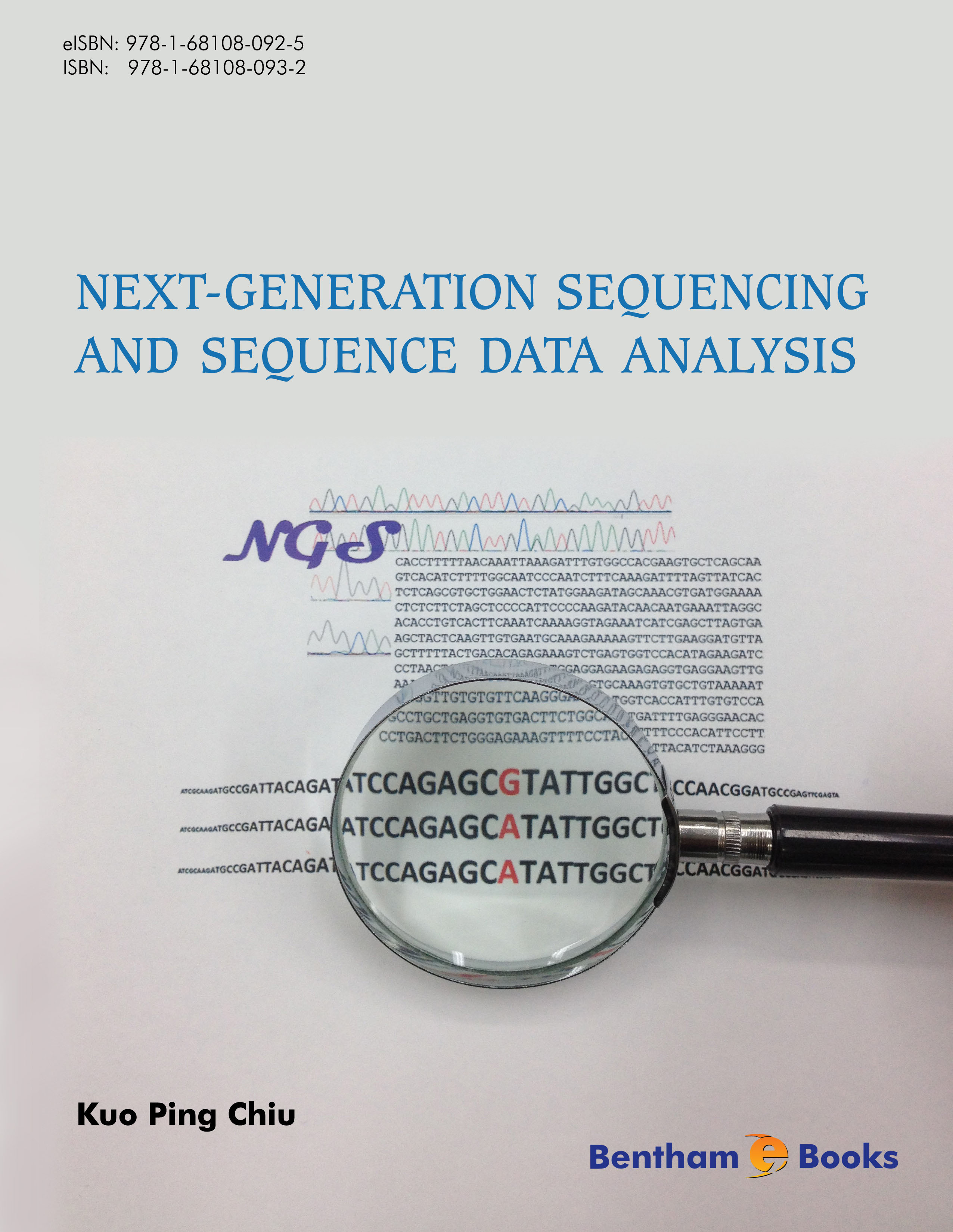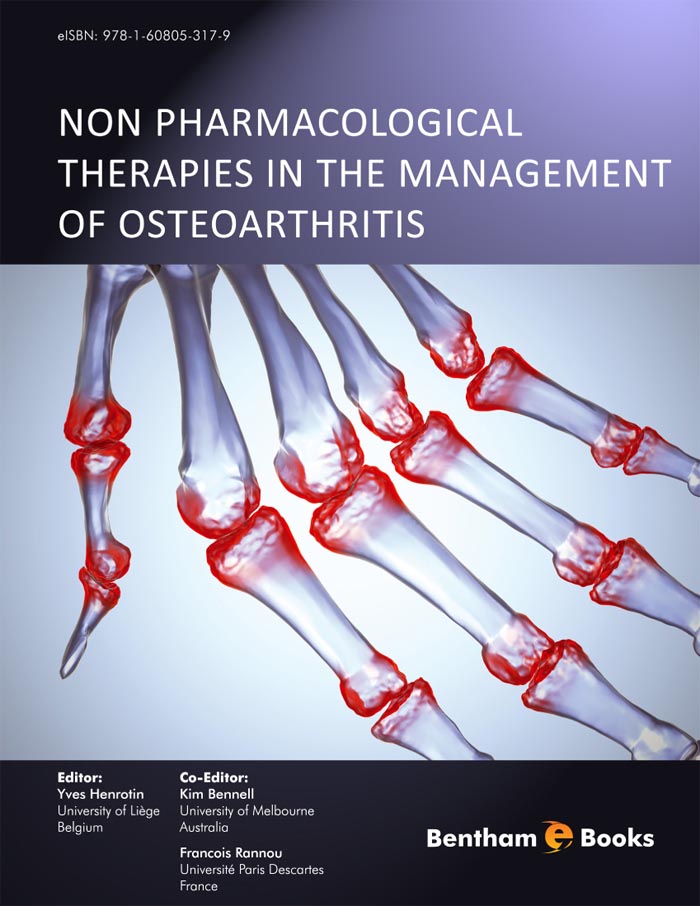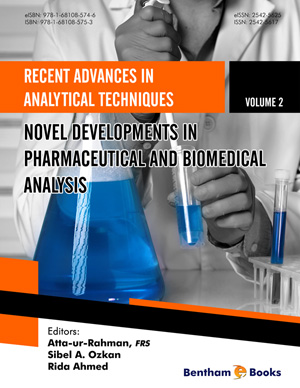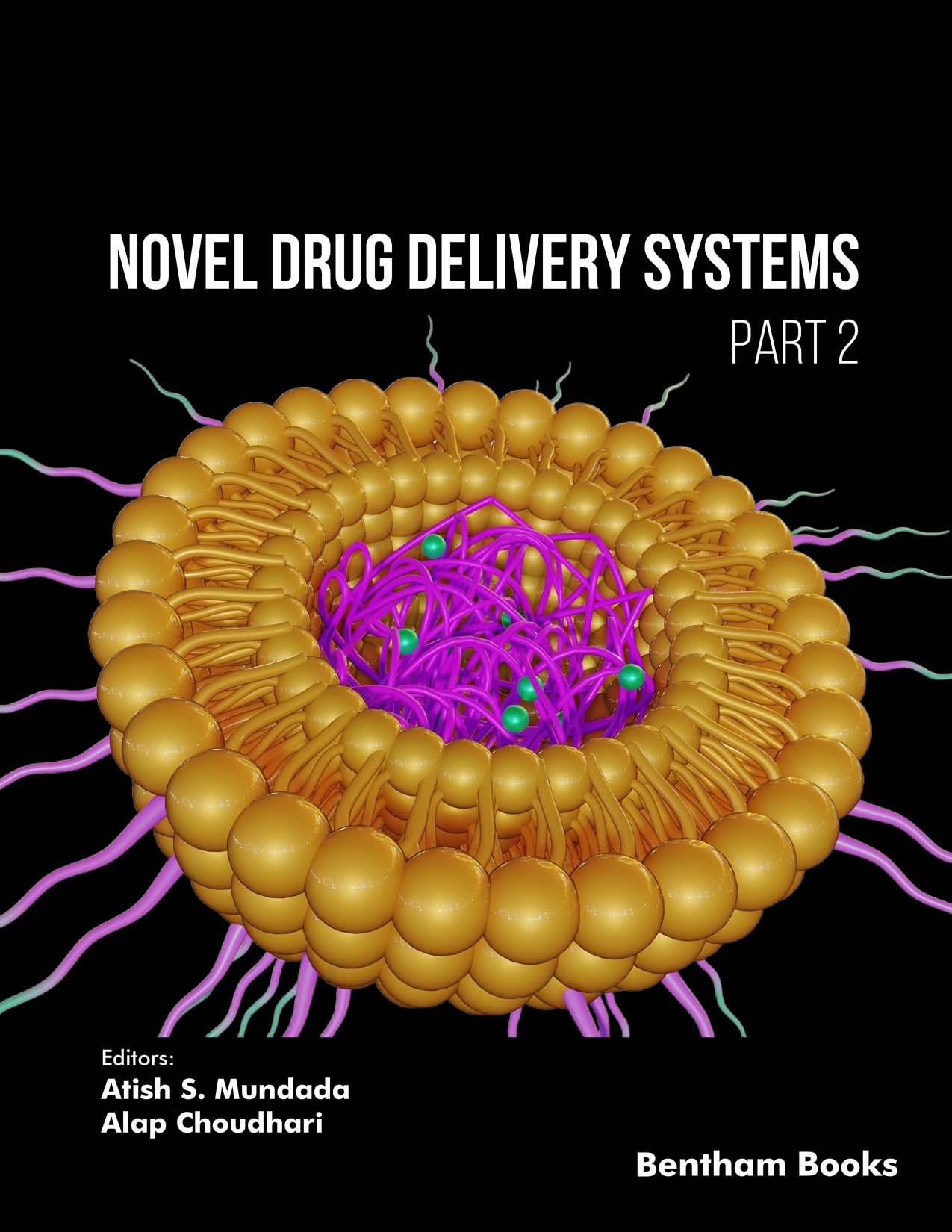Bentham Science Publishers
Bentham Science Publishers is a major publisher of more than 100 peer-reviewed science, technology and medical (STM) journals, along with a rapidly growing collection of eBooks. Since 1993, Bentham Science Publishers has been catering to the information needs of the pharmaceutical, engineering, biomedical and medical research community.1241 - 1260 of 1780 results
-
-
Next-Generation Sequencing and Sequence Data Analysis
More LessNucleic acid sequencing techniques have enabled researchers to determine the exact order of base pairs - and by extension, the information present - in the genome of living organisms. Consequently, our understanding of this information and its link to genetic expression at molecular and cellular levels has lead to rapid advances in biology, genetics, biotechnology and medicine. Next-Generation Sequencing and Sequence Data Analysis is a brief primer on DNA sequencing techniques and methods used to analyze sequence data. Readers will learn about recent concepts and methods in genomics such as sequence library preparation, cluster generation for PCR technologies, PED sequencing, genome assembly, exome sequencing, transcriptomics and more.
This book serves as a textbook for students undertaking courses in bioinformatics and laboratory methods in applied biology. General readers interested in learning about DNA sequencing techniques may also benefit from the simple format of information presented in the book.
-
-
-
Nitrogen Removal Processes for Wastewater Treatment
More LessNitrogen containing compounds produced by industrial processes are pollutants which pose a significant environmental and health hazard. There are a number of processes that have been devised for removing nitrogen compounds from wastewater.
This reference book summarizes different denitrification methods for wastewater processing. The book introduces readers to toxic nitrogen compounds responsible for water pollution. This introduction is followed by chapters which explain different nitrogen removal methods including conventional methods, biological methods, food industry wastewater treatment and new approaches towards environmental pollution remediation: Bio Electrochemical Systems (BESs). This book is a handy reference guide for industrial and environmental engineers and students learning about wastewater management and industrial denitrification.
-
-
-
Non Pharmacological Therapies in the Management of Osteoarthritis
More LessOsteoarthritis is a chronic disease prevalent among the elderly. Its most prominent feature is the progressive destruction of articular cartilage which results in impaired joint motion, severe pain and ultimately disability. Its prevalence and its impact on daily life pose a significant public health problem. Today, a cure for osteoarthritis remains elusive and the management of the disease is largely palliative, focusing on the alleviation of symptoms. Current recommendations include a combination of pharmacological and non-pharmacological treatments. The term “non-pharmacological” includes physical therapy and rehabilitation, but also nutraceuticals. All guidelines on osteoarthritis management highlight the importance of weight loss and physical activity to improve the functional status of patients. A number of alternative therapies are also commonly suggested by physicians and physiotherapists in their daily practice. The efficacy of these therapies is not evidenced by strong clinical trials. This category includes education, information, electrotherapy, ultrasound, electromagnetic field, spa, hydrotherapy, acupuncture, etc. Non Pharmacological Therapies in the Management of Osteoarthritis reviews the clinical relevance of these therapies and the difficulties in conducting high quality trials assessing their efficacy. This e-book presents supportive scientific evidence for their efficacy and explains the mechanism of action of nutraceuticals targeting osteoarthritis. It also includes many example of exercises, mobilization and manipulation techniques directly useful for medical professionals.
-
-
-
Nonalcoholic Fatty Liver Disease (NAFLD)
More LessNon-alcoholic fatty liver disease (NAFLD) is a common cause of elevated liver enzymes and chronic liver disease in Western countries. NAFLD is characterized by elevated liver enzymes in the absence of alcohol consumption and secondary causes of liver disease. It is an independent predictor of future risk of cardiovascular diseases, type 2 diabetes and metabolic syndrome (hypertension, abdominal obesity, dyslipidemia, glucose intolerance).
This book is a quick reference guide for medical students and professionals about NAFLD. Readers will find a summary of epidemiology, clinical features, diagnosis, imaging techniques, histopathology, and disease management. The book also presents information about NAFLD linked with hepatocellular carcinoma and guidelines for treating NAFLD in pediatric patients. Each chapter presents information in a simple, structured manner making this text an ideal handbook for supplementing hepatology modules in medical curricula.
-
-
-
Nondestructive Evaluation of Agro-products by Intelligent Sensing Techniques
More LessWith rapid progress being made in both theory and practical applications, Artificial Intelligence (AI) is transforming every aspect of life and leading the world towards a sustainable future. AI technology is fundamentally and radically affecting agriculture with a move towards smart systems. The outcome of this transition is improved efficiency, reduced environmental pollution, and enhanced productivity of crops.
Nondestructive Evaluation of Agro-products by Intelligent Sensing Techniques is a reference which provides readers timely updates in the progress of intelligent sensing techniques used for nondestructive evaluation of agro-products. Chapters, each contributed by experts in food safety and technology, describe existing and innovative techniques that could be or have been applied to agro-products quality and safety evaluation, processing, harvest, traceability, and so on. The book includes 11 individual chapters, with each chapter focusing on a specific aspect of intelligent sensing techniques applied in agriculture. Specifically, the first chapter introduces the reader to representative techniques and methods for nondestructive evaluation. Subsequent chapters present detailed information about the processing and quality evaluation of agro-products (e.g., fruits, and vegetables), food grading, food tracing, and the use of robots for harvesting specialty crops.
Key Features:
- 11 chapters, contributed by experts that cover basic and applied research in agriculture
- introduces readers to nondestructive evaluation techniques
- covers food quality evaluation processes
- covers food grading and traceability systems
- covers frontier topics that represent future trends (robots and UAVs used in agriculture)
- familiarizes the readers with several intelligent sensing technologies used in the agricultural sector (including machine vision, near-infrared spectroscopy, hyperspectral/multispectral imaging, bio-sensing, multi-technology fusion detection)
- provides bibliographic references for further reading
- gives applied examples on both common and specialty crops
This reference is intended as a source of updated information for consultants, students and academicians involved in agriculture, crops science and food biotechnology. Professionals involved in food safety and security planning and policymaking will also benefit from the information presented by the authors.
-
-
-
Novel Developments in Pharmaceutical and Biomedical Analysis
Recent Advances in Analytical Techniques: Volume 2
More LessRecent Advances in Analytical Techniques is a series of updates in techniques used in chemical analysis. Each volume presents information about a selection of analytical techniques. Readers will find information about developments in analytical methods such as chromatography, electrochemistry, optical sensor arrays for pharmaceutical and biomedical analysis. Novel Developments in Pharmaceutical and Biomedical Analysis is the second volume of the series and covers the following topics:
o Chromatographic assays of solid dosage forms and their drug dissolution studies
o UHPLC method for the estimation of bioactive compounds
o HILIC based LC/MS for metabolite analysis
o In vitro methods for the evaluation of oxidative stress
o Application of vibrational spectroscopy in studies of structural polymorphism of drugs
o Electrochemical sensors based on conductive polymers and carbon nanotubes
o Optical sensor arrays for pharmaceutical and biomedical analyses
o Chemical applications of ionic liquids
o New trends in enantioanalysis of pharmaceutical compounds
-
-
-
Novel Drug Delivery Systems (Part 1)
More LessNovel Drug Delivery Systems - Part 1 provides a comprehensive exploration of controlled drug delivery systems (NDDS) and their impact on patient outcomes and therapeutic effectiveness. Covering key topics like the principles of controlled-release dosage forms, the role of polymers, and innovative techniques like microencapsulation and mucoadhesive systems, this book bridges foundational concepts with cutting-edge advancements. It also addresses specialized systems like gastroretentive, transdermal, and ocular drug delivery methods. Ideal for pharmaceutical professionals, students, and researchers, this book serves as a critical resource for understanding and developing advanced drug delivery technologies.
Key Features:
- Comprehensive introduction to controlled drug delivery concepts
- In-depth analysis of pharmacokinetics and polymers in NDDS
- Exploration of microencapsulation and mucoadhesive systems
- Insights into gastroretentive and transdermal drug delivery
- Overview of nanotechnology and implantable devices in drug delivery
- Coverage of the latest developments in injectables and ocular systems
-
-
-
Novel Drug Delivery Systems (Part 2)
More LessNovel Drug Delivery Systems (Part 2) covers the advanced techniques and innovations transforming pharmaceutical sciences, with a focus on enhancing drug efficacy and patient outcomes. This comprehensive guide explores a wide array of delivery methods, including nasopulmonary, transdermal, ocular, nanotechnology-based, implantable, and controlled-release injectables. Each chapter provides an in-depth analysis of these unique delivery routes, presenting both foundational knowledge and the latest technological advancements in the field.
Designed for students, researchers, and professionals in pharmaceuticals and medicine, this book bridges basic concepts with cutting-edge practices, emphasizing the science and impact of controlled drug delivery.
Key Features:
- Detailed exploration of nasopulmonary, transdermal, ocular, and implantable delivery systems
- Insight into nanotechnology's role in drug delivery
- Comprehensive coverage of controlled-release injectables
-
-
-
Novel Strategies and Approaches in Hypertension Therapy
Current and Future Developments in Hypertension: Volume 1
More LessINTRODUCTION:
Hypertension has become a major public health problem in the last few decades. High blood pressure is a serious risk factor for premature cardiovascular disease and end-organ damage including left-ventricular hypertrophy and congestive heart failure, which in turn increases the risk of cardiovascular morbidity and mortality.
While studies of hypertension have been performed worldwide in a variety of epidemiological settings such as diabetes, renal function, obesity and thyroid disorders, there is a need to identify appropriate treatment strategies
Novel Strategies and Approaches in Hypertension introduces the reader to different aspects of hypertension treatment (environmental and occupational factors and different clinical settings that can trigger the disease). The book also covers special topics related to the use of new diagnostic biomarkers for hypertension patients, as well as endocrine and nutrition-focused approaches to treat the condition.
This reference book will be useful for medical professionals involved in the management and care of patients affected with hypertension.
[Series Introduction]
Frontiers in Hypertension presents reference works, textbooks and monographs on both fundamental and advanced topics related to the pathophysiology, diagnosis and treatment of hypertension. The series is essential reading for medical students and professionals involved in hypertension and allied subspecialty treatment programs.
-
-
-
Numberama: Recreational Number Theory In The School System
More LessNumberama: Recreational Number Theory in the School System presents number patterns and mathematical formulas that can be taught to children in schools. The number theories and problems are reinforced by enjoyable games that children can play to enhance their learning in a fun-loving way. Key features of the book include:
information about a number of well-known number theory problems such as Fibonaccci numbers, triangular numbers, perfect numbers, sums of squares, and Diophantine equations
organized presentation based on skill level for easy understanding
all basic mathematical operations for elementary school children
a range of algebraic formulae for middle school students
descriptions of positive feedback and testimonials where recreational number theory has been effective in schools and education programs
This book is a useful handbook for elementary and middle-school teachers, students, and parents who will be able to experience the inherent joys brought by teaching number theory to children in a recreational way.
-
-
-
Numerical Analysis for Science, Engineering and Technology
More LessThis textbook is intended as a guide for undergraduate and graduate students in engineering, science and technology courses. Chapters of the book cover the numerical concepts of errors, approximations, differential equations and partial differential equations. The simple presentation of numerical concepts and illustrative examples helps students and general readers to understand the topics covered in the text.
-
-
-
Numerical Machine Learning
More LessNumerical Machine Learning is a simple textbook on machine learning that bridges the gap between mathematics theory and practice. The book uses numerical examples with small datasets and simple Python codes to provide a complete walkthrough of the underlying mathematical steps of seven commonly used machine learning algorithms and techniques, including linear regression, regularization, logistic regression, decision trees, gradient boosting, Support Vector Machine, and K-means Clustering.
Through a step-by-step exploration of concrete numerical examples, the students (primarily undergraduate and graduate students studying machine learning) can develop a well-rounded understanding of these algorithms, gain an in-depth knowledge of how the mathematics relates to the implementation and performance of the algorithms, and be better equipped to apply them to practical problems.
Key features
- Provides a concise introduction to numerical concepts in machine learning in simple terms
- Explains the 7 basic mathematical techniques used in machine learning problems, with over 60 illustrations and tables
- Focuses on numerical examples while using small datasets for easy learning
- Includes simple Python codes
- Includes bibliographic references for advanced reading The text is essential for college and university-level students who are required to understand the fundamentals of machine learning in their courses.
-
-
-
Numerical Methods and Implementation in Geotechnical Engineering – Part 1
Frontiers in Civil Engineering : Volume 3
More LessNumerical Methods and Implementation in Geotechnical Engineering explains several numerical methods that are used in geotechnical engineering. The first part of this reference set includes methods such as the finite element method, distinct element method, discontinuous deformation analysis, numerical manifold method, smoothed particle hydrodynamics method, material point method, plasticity method, limit equilibrium and limit analysis, plasticity, slope stability and foundation engineering, optimization analysis and reliability analysis. The authors have also presented different computer programs associated with the materials in this book which will be useful to students learning how to apply the models explained in the text into practical situations when designing structures in locations with specific soil and rock settings.
This reference book set is a suitable textbook primer for civil engineering students as it provides a basic introduction to different numerical methods (classical and modern) in comprehensive readable volumes.
-
-
-
Numerical Methods and Implementation in Geotechnical Engineering – Part 2
Frontiers in Civil Engineering: Volume 4
More LessNumerical Methods and Implementation in Geotechnical Engineering explains several numerical methods that are used in geotechnical engineering. The second part of this reference set includes more information on the distinct element method, geotechnical optimization analysis and reliability analysis. Information about relevant additional numerical methods is also provided in each chapter with problems where applicable. The authors have also presented different computer programs associated with the materials in this book set which will be useful to students learning how to apply the models explained in the text into practical situations when designing structures in locations with specific soil and rock settings.
This reference book set is a suitable textbook primer for civil engineering students as it provides a basic introduction to different numerical methods (classical and modern) in comprehensive readable volumes.
-
-
-
Nutrition and Cancer From Epidemiology to Biology
More LessVarious estimates suggest that between 30-40% of all human cancers are related to dietary patterns. Strong epidemiological evidence from population and twin studies points to dietary constituents that either contribute or protect against the development of various forms of cancer.
This e-book reviews some traditional and relatively new areas of nutrition and cancer. Epidemiological data is combined with molecular biology research and, where available, clinical trial data. The emerging science of "Nutrigenomics" is discussed with chapters on the biological role of various nutrition components from red wine, peppers, green tea, fish oil, cruciferous vegetables, retinoids; and the intersection of nutrition and epigenetics in hematopoiesis.
This e-book will be of interest to researchers in the nutrition and cancer field, physicians in family and community medicine, internal medicine and oncology, as well as dieticians providing counseling to cancer patients and cancer survivors.
-
-
-
Nutrition: An Approach to Good Health and Disease Management
More LessThis book summarizes key information required for planning and implementing a healthy diet for patients based on sound nutritional concepts. Readers will find information on the background of nutrition in disease management and nutritional regulations in the USA. The book also describes macro- and micronutrients (including minerals and vitamins) and the applications of relevant nutritional concepts to real-life situations, using well-designed simulated clinical scenarios. Additionally, factors contributing to disease as well as the link between socio-economic status, culture and nutrition are discussed. This book should serve as useful handbook for nutritionists and health care providers and medical or pharmacology students taking courses in nutritional sciences.
-
-
-
Nutritional Biochemistry: From the Classroom to the Research Bench
More LessNutritional Biochemistry: From the Classroom to the Research Bench aims to provide students and readers with a detailed, simplified, and comprehensive account of the relationship between nutrition and metabolism.
A key feature of this textbook is a comparative approach on the subject of nutritional biochemistry which helps to explain the differences in metabolism, nutrient requirement, and sometimes in the molecular pathways between mammalian and non-mammalian species.
Chapters give an overview of the need of food and water (chapter 1), before describing the cell and organ system components (chapter 2). The textbook then focuses on the regulation of food intake from the factors influencing appetite to the central and peripheral underlying mechanisms (chapters 3-5).
Water intake and regulation in the body are covered (chapter 6), along with key topics of protein, carbohydrate, and lipid metabolism (chapters 7, 8, and 9), including their digestion, absorption, transport, utilization, synthesis, degradation, and molecular regulation. A brief summary concludes the book (Chapter 10).
This book serves as a textbook for students and faculty in beginner courses in biochemistry and nutrition and is designed to give learners a comprehensive understanding of the topic to help them when considering a career in research.
-
-
-
Obesity and Disease in an Interconnected World: A Systems Approach to Turn Huge Challenges into Amazing Opportunities
More LessGlobalization and economic progress has been accompanied with an increase in the incidence of obesity, cardiovascular disease and other non-communicable illnesses worldwide among populations in some countries. Obesity and Disease examines how these rising epidemics of obesity and other lifestyle problems are changing health guidelines globally - from directing health care professionals on how to care for individuals to encouraging them to embrace the interconnected systems involved in chronic disease risk management, prevention and treatment. With a focus on systems, this reference serves as an excellent resource on how to develop a more comprehensive approach to population health. Starting with a systematic approach to health risk assessment in section one, followed by a targeted approach to risk reduction and prevention in section two, the eBook moves along seamlessly into section three calling for a shared responsibility toward strengthening health systems globally that can help determine and improve upon the health of individuals, and societies across the world.
Obesity and Disease gives applicable concepts to readers in a multidisciplinary and collaborative approach to alter health systems and implement changes that promote health and wellness in the communities they serve and live in. The information and resources in this eBook also serve as a guideline for collaborations across professional associations with a goal of developing strategic plans to combat obesity and diabetes.
-
-
-
Objective Pharmaceutics: A Comprehensive Compilation of Questions and Answers for Pharmaceutics Exam Prep
More LessUnlock success in pharmaceutical exams with Objective Pharmaceutics: A Comprehensive Compilation of Questions and Answers for Pharmaceutics Exam Prep. This guide is meticulously crafted to tackle the challenges of pharmaceutics exams through a diverse range of questions. It covers multiple choice questions, concise one-liners, and true/false statements, mirroring the formats commonly found in drug inspector, pharmacist, GPAT, nursing exams, and more.
Key Features:
Exam-Ready Questions: Prepare for a variety of medical exams with more than 2000 carefully curated questions.
Diverse Testing Formats: Master multiple choice, one-liner, and true/false questions for a well-rounded exam readiness.
Broad Assessment: Tailored for drug inspectors, pharmacists, GPAT aspirants, and other medical professionals.
Build Thinking Capabilities: Progress from simple to challenging questions, enhancing critical thinking skills.
This thorough guide empowers you to learn the key topics in pharmaceutics and navigate the most challenging questions in your exam prep journey.
-
-
-
Obstetric Anesthesia: Clinical Updates
Recent Advances in Anesthesiology: Volume 4
More LessIn recent years, we have witnessed significant advances in obstetric anesthesia, providing greater safety for the mother and the fetus, as well as an improvement in pain management procedures during labor.
This volume presents updates in obstetrics and gynecology that are reflective of the changes in the demographics and associated clinical presentations of gynecological pathologies. It compiles state of the art information on the subject in 20 chapters contributed by more than 50 experts in obstetric anesthesia. The main objective of this volume is to inform and update readers about the different aspects essential to the practice of anesthesia and analgesia during pregnancy, labor, cesarean section and puerperium. The contents also include information about the management of pregnant women with different pathologies and high-risk pregnancies.
The authors believe that it is essential for all anesthesiologists to be aware of the latest advances and well-contrasted scientific evidence that will allow them to carry out their usual clinical activity.
The volume approaches the subject in a clear and didactic way for the benefit of all professionals involved in this field, including anesthesiologists, gynecologists, obstetricians, surgeons, clinicians and allied healthcare service providers.
-




















